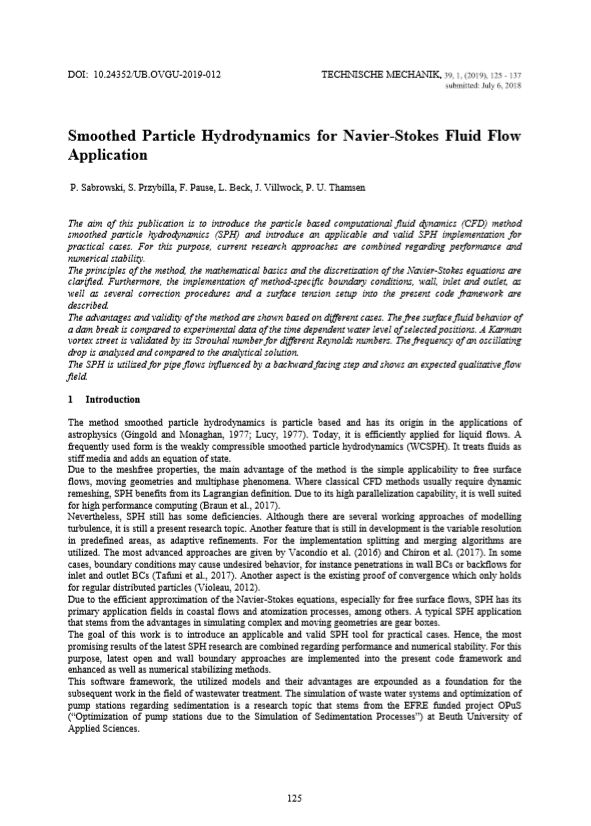Smoothed Particle Hydrodynamics for Navier-Stokes Fluid Flow Application
DOI:
https://doi.org/10.24352/UB.OVGU-2019-012Abstract
The aim of this publication is to introduce the particle based computational fluid dynamics (CFD) method smoothed particle hydrodynamics (SPH) and introduce an applicable and valid SPH implementation for practical cases. For this purpose, current research approaches are combined regarding performance and numerical stability. The principles of the method, the mathematical basics and the discretization of the Navier-Stokes equations are clarified. Furthermore, the implementation of method-specific boundary conditions, wall, inlet and outlet, as well as several correction procedures and a surface tension setup into the present code framework are described. The advantages and validity of the method are shown based on different cases. The free surface fluid behavior of a dam break is compared to experimental data of the time dependent water level of selected positions. A Karman vortex street is validated by its Strouhal number for different Reynolds numbers. The frequency of an oscillating drop is analysed and compared to the analytical solution. The SPH is utilized for pipe flows influenced by a backward facing step and shows an expected qualitative flow field.





